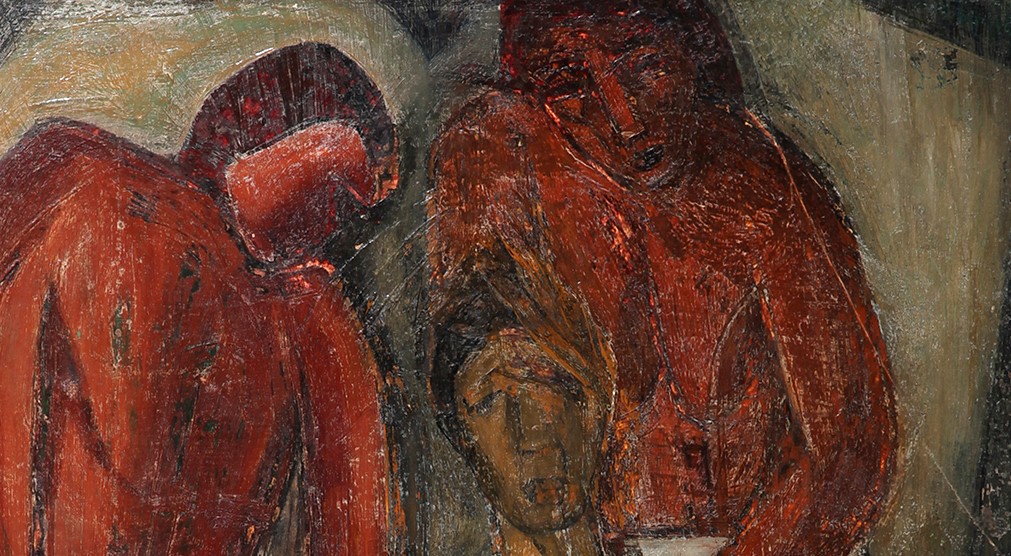Ram Kumar was an essential part of the first generation of
In 1961, Ram Kumar was in Ranikhet for six months and painted landscapes. What makes this work exceptionally unique is how both the figurative blends in with the abstract in one image titled, "Mazes of the Mind". The reference to the word 'mazes' has been made by Richard Bartholomew, in The Art Critic, pg. 135 which is explained further in another essay in the same book, ‘The Abstract Principle in the Paintings of Ram Kumar’ on pg. 538. “The themes are not people or mountains or streets or trees or rivers or
He started painting largely figurative works in the late

FRONT
This oil-on-board double-sided work has been signed and dated as 1960 on the figurative side and dated as 1961 on the abstract side. Presumably, Ram Kumar completed it one after the other. This was right before his trip to Benaras for the first time with fellow artists M F Husain and Sripat Rai. Therefore this work is special as it formulates a transitory phase in the artist’s journey from figurative to abstract. Inspired by his time spent in Shimla as a

The figurative side, comprising three figures is equally interesting. Here the two adult figures are clearly nurturing the child empathetically. The gesture of the hand suggests protection and
This brought about a social predicament in the way he rendered his figures like primitive drawings with naive expressions.
Similar to some Western abstract expressionists like Hans Hoffman, and Barnett Newman, Ram Kumar along with V. S. Gaitonde made a significant contribution to the ‘abstract’ movement in the east, forty years later. The influence of cubist masters such as Andre Lhote and Fernand Leger during his studies in Paris in 1942 - 1959 where individual elements of the composition were

Pg 82, Ram Kumar: A Journey Within, Vadehra Art Gallery
Richard

BACK
Ram Kumar (1924 - 2018), Mazes of the Mind / Street Urchins, 1961/60
signed and dated upper left, Oil/Board (recto/verso), 26 x 19 in.
Estimate: 1,50,00,000 - 3,00,00,000 INR
Provenance: Private Collection
Published: Ram Kumar: A Journey Within, Vadehra Art Gallery, Pg 82.
Coming up in our Spring auction on April 24th - 25th, 2019!